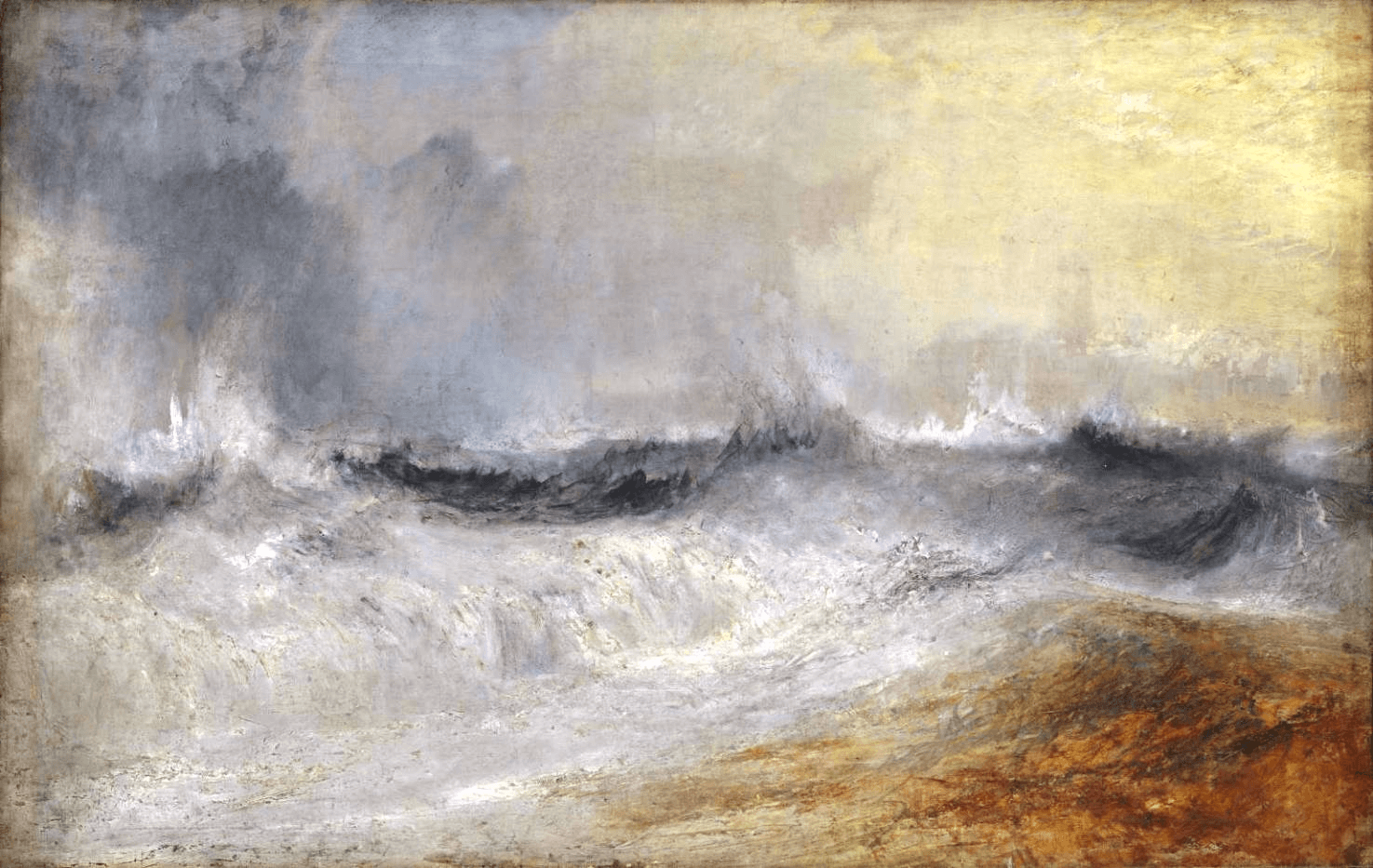
In yesterday’s piece about Victoria Finlay’s book Color: A Natural History of the Palette, I hinted that I might mention one of the many facts about colors that I learned in the book. Enjoy!
British landscape painter Joseph Mallord William Turner didn’t usually make savvy choices of paints. Back in the days before synthetic paint colors (but even a bit now as well), some paints were much more durable than others. Make a questionable choice, and one or more of your colors might disappear quickly. It might react with air and light to fade away, or it might interact with an ingredient in a nearby paint, binder, or varnish and turn a color you definitely didn’t intend. So, it was important to choose reliable and lasting pigments, but Turner often didn’t. As a result, his works often faded very quickly – sometimes within just a few years. While his paintings seem by all appearances to still be in great shape, Finlay tells us that many of them, including the seascape pictured above, used to be much brighter and more vibrant in a way we can only imagine today.
Source: Finlay, Victoria. Color: A Natural History of the Palette. New York: Ballantine Books, 2002. P. 134-5, 162-8.

